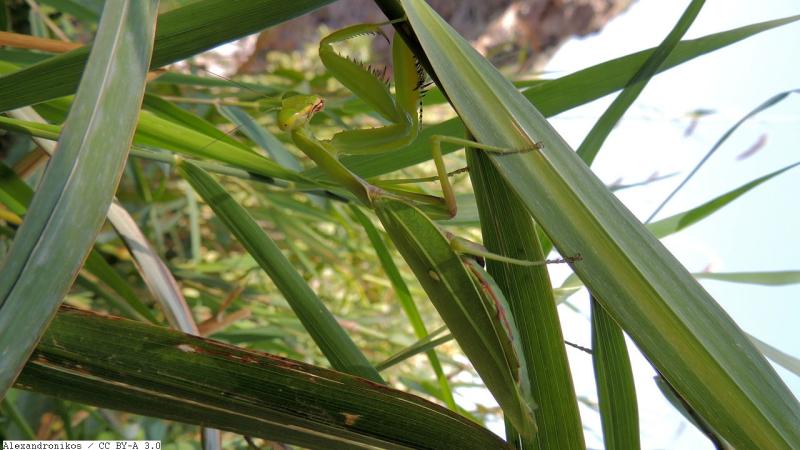
In an exciting recent study, researchers have reported an accidental encounter of a male praying mantis (Hierodula tenuidentata), eating a guppy fish (Poecilia reticulata) in Karnataka. Although mantises are known to attack small vertebrates, the addition of fish to their menu, as reported in the study published in the Journal of Orthoptera Research, is the first such documented evidence.
Mantises are a group of insects which mostly feed on other insects. The name ‘praying mantis’ comes from the distinctive way they raise their forelegs, as if in prayer. They have a voracious appetite and are, at times, referred to as ‘preying mantis’. They usually sit and wait for their prey, but fishing is a behaviour that is considered unusual.
In an accidental encounter, researchers saw the male mantis, about 5.6 cm long, visiting the roof garden continuously for five consecutive days looking for its prey. A small, artificial pond in the garden had some fish. The water lilies and water cabbage that were on the surface of the pond helped the insect to sit and hunt its prey. The researchers observed that the insect consumed nine fishes in five days, and disappeared after that.
Many studies in the past have indicated that the eyes of the mantises are adapted to vision mostly in daylight. However, the present observation, where the mantis was seen hunting in the night with low light, could add a new dimension to their visual abilities. Besides, the fact that these insects could feed on fish has a remarkable significance on the pond ecosystem.
“Our observation shows the potential for a single invertebrate to have a strong impact on the fish community and indirectly on the whole pond ecosystem as small fishes like guppies are active predators of aquatic insects”, say the researchers.
The other interesting observation from the study was the repeated predation behaviour of the mantis where it was seen hunting for the fish from the same location. Although mantises are known to possess basic learning abilities like avoiding a toxic prey, this observation indicates a more elaborate hunting strategy that these insects might have learned from different environmental clues. There are also earlier reports of mantises that know how to select an area for hunting.
The researchers believe that their findings could open up the possibility for other studies exploring this behaviour of mantises. “Remembering the prey’s abundance at a particular site in relation to their ease of capture and their nutritional content could be one important factor helping these insects and may indirectly influence individual fitness. This should be investigated in further studies”, conclude the researchers.





